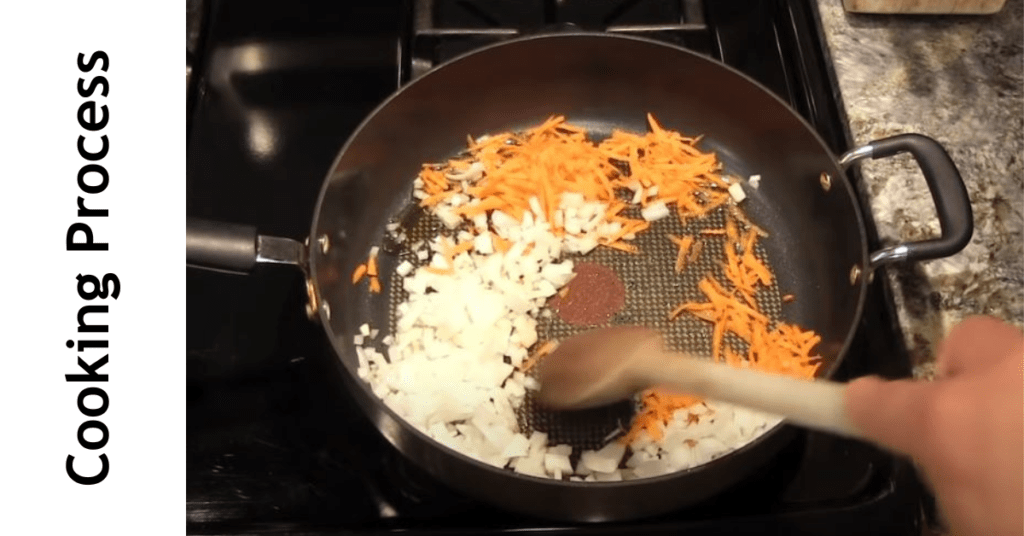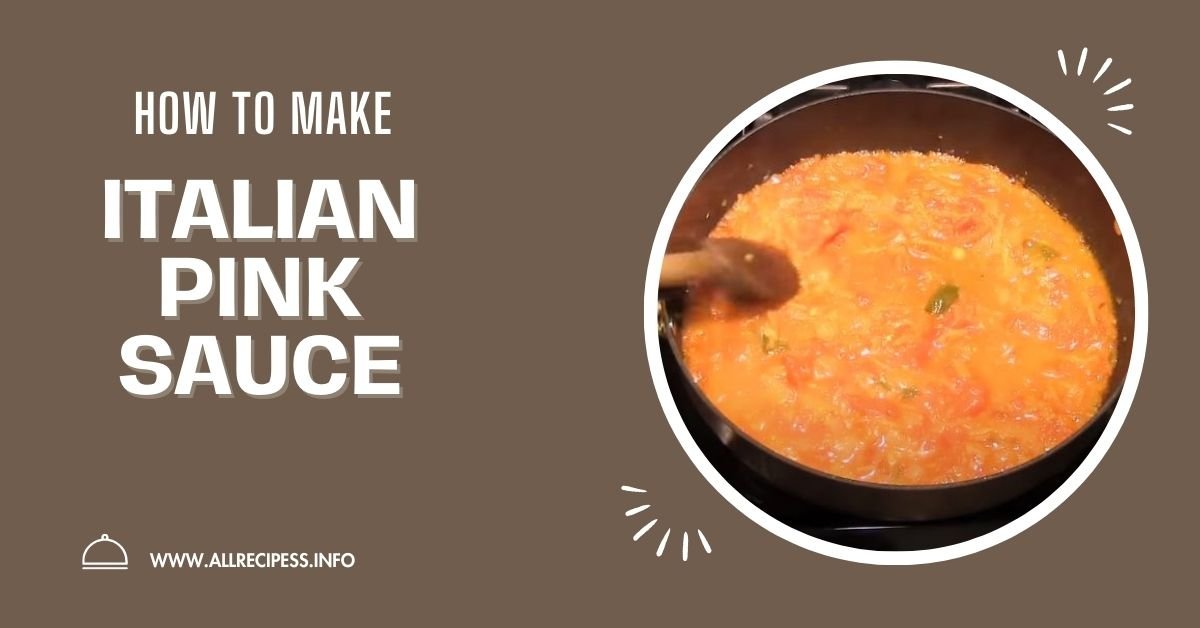How To Make Italian Pink Sauce
Cooking enthusiasts often struggle to find a sauce that strikes the perfect balance between rich tomato flavor and creamy indulgence. Many tomato-based sauces can be too acidic or watery, while purely creamy sauces might lack the robust taste of fresh tomatoes. Enter Italian Pink Sauce—a delectable fusion that marries the best of both worlds. Renowned for its creamy texture and vibrant color, this sauce is a favorite among home cooks and professional chefs alike. Its versatility makes it a staple in kitchens around the world, perfect for elevating a simple pasta dish or complementing a more elaborate meal.
In this article, I’ll guide you through the steps to create this delightful sauce, offering a solution to the common culinary conundrum of achieving the perfect flavor balance. Whether you’re planning to serve it with various types of pasta or alongside a classic eggplant parmesan, this recipe will become your go-to for adding a touch of elegance to your meals. With my expertise and years of experience in Italian cuisine, I’ll ensure that your Italian Pink Sauce turns out flawlessly every time.
Ingredients for Italian Pink Sauce

Dried Basil
Dried basil is a crucial ingredient in Italian cuisine, offering a concentrated burst of herbal flavor that enhances the overall taste of the sauce. It’s more potent than fresh basil, providing a deep, aromatic essence that pairs perfectly with tomatoes. For this recipe, about a teaspoon of dried basil will suffice to infuse the sauce with its distinctive fragrance and slightly sweet, peppery notes.
Half an Onion
Onions are fundamental in building the flavor base of many sauces. Using half an onion, finely chopped, will add a mild sweetness and depth to the pink sauce. As the onion cooks down, it releases its natural sugars, which help balance the acidity of the tomatoes and create a harmonious flavor profile.
One Carrot
A finely chopped carrot adds a subtle sweetness and additional depth to the sauce. Carrots are often used in Italian cooking to counterbalance the acidity of tomatoes, providing a natural sweetness that complements the overall taste without making the sauce overtly sweet.
Teaspoon of Garlic Shallot Puree or One Clove of Garlic
Garlic is a staple in Italian cuisine, known for its pungent aroma and savory taste. In this recipe, you can use either a teaspoon of garlic shallot puree or one clove of garlic, minced. The puree offers a smoother, more integrated flavor, while fresh garlic provides a sharper, more distinct taste. Either option will add a rich, aromatic quality to the sauce.
Half Teaspoon of Crushed Red Pepper
Crushed red pepper adds a hint of heat and a subtle kick to the sauce. Using half a teaspoon will provide a gentle warmth without overpowering the other flavors. It’s a perfect addition for those who enjoy a bit of spice in their dishes.
Jarred Tomatoes
The heart of this sauce is jarred tomatoes, which are often more flavorful and less acidic than canned varieties. Using high-quality jarred tomatoes ensures a rich, robust tomato base that is essential for a delicious pink sauce. The tomatoes should be finely chopped or crushed to blend smoothly into the sauce.
Olive Oil
Olive oil is used to sauté the vegetables, providing a rich, fruity base that enhances the overall flavor of the sauce. It’s essential to use a good quality olive oil to ensure the best taste. The oil also helps in extracting and marrying the flavors of the onion, carrot, and garlic.
Pinch of Kosher Salt
A pinch of kosher salt is used to season the italian pink sauce, enhancing the natural flavors of the ingredients. Kosher salt is preferred for its pure taste and coarse texture, which makes it easier to control the seasoning level.
Teaspoon of Sugar (Optional)
A teaspoon of sugar can be added to balance the acidity of the tomatoes. This step is optional, depending on your preference and the sweetness of the carrots and jarred tomatoes. The sugar helps mellow out any harsh acidity, resulting in a smoother, more rounded flavor.
Quarter Cup of Heavy Cream
The addition of a quarter cup of heavy cream transforms the sauce into a luxurious pink sauce. The cream adds richness and a silky texture, perfectly balancing the acidity of the tomatoes and the sweetness of the vegetables. It creates a beautifully creamy and cohesive sauce that is both elegant and comforting.
Cooking Process of Italian Pink Sauce

Sautéing Vegetables
Heat Olive Oil in a Pan
Begin by heating 2 tablespoons of olive oil in a large pan over medium heat. Olive oil serves as the base for sautéing, imparting a rich, fruity flavor to the vegetables.
Sauté Onion and Carrot in Olive Oil Until Translucent
Add the finely chopped half onion and one carrot to the pan. Sauté these vegetables, stirring occasionally, until they become translucent. This process usually takes about 5-7 minutes. The goal is to soften the vegetables and release their natural sugars, which will enhance the overall flavor of the sauce.
Importance of Achieving Translucency for Flavor
Achieving translucency is crucial because it indicates that the onions and carrots are cooked through and have released their sweetness. This stage also ensures that the vegetables are soft enough to blend smoothly into the sauce later, providing a balanced and harmonious taste.
Adding Garlic and Basil
Add Garlic Shallot Puree or Minced Garlic
Once the onions and carrots are translucent, add a teaspoon of garlic shallot puree or one minced garlic clove to the pan. Garlic adds a robust, aromatic flavor that forms the backbone of the sauce’s savory profile.
Add Dried Basil
Add a teaspoon of dried basil to the mixture. The dried basil releases its aromatic oils when heated, infusing the sauce with a fragrant, slightly sweet, and peppery flavor.
Stir and Cook Until Fragrant
Stir the garlic and basil into the vegetables and cook for about 1-2 minutes, or until the mixture becomes fragrant. This step ensures that the flavors are well integrated and that the garlic does not burn, which would impart a bitter taste.
Adding Tomatoes and Simmering
Add Jarred Tomatoes to the Pan
Pour the jarred tomatoes into the pan, stirring to combine with the sautéed vegetables and aromatics. Jarred tomatoes typically have a rich, concentrated flavor that serves as the foundation of the sauce.
Bring the Mixture to a Boil
Increase the heat and bring the tomato mixture to a boil. This initial high heat helps to kickstart the cooking process and meld the flavors together.
Reduce Heat and Simmer with the Lid On for 30 Minutes
Once the mixture reaches a boil, reduce the heat to low and cover the pan with a lid. Simmer the sauce for 30 minutes, stirring occasionally. Simmering allows the flavors to meld and develop slowly, resulting in a deeper, more complex taste. The lid traps moisture, preventing the sauce from reducing too quickly.
How To Make Jamaican Beef Patties Recipe
Reducing the Sauce
Remove Lid for the Last Five Minutes
After 25 minutes of simmering, remove the lid from the pan. This step allows excess moisture to evaporate, which helps thicken the sauce.
Allow the Sauce to Reduce and Thicken
Continue to simmer the sauce for the remaining 5 minutes, uncovered. This reduction process intensifies the flavors and improves the sauce’s consistency, making it more robust and rich.
Blending the Sauce
Transfer Sauce to a Food Processor
Carefully transfer the sauce to a food processor or use an immersion blender directly in the pan. This step is essential for achieving a smooth, cohesive texture.
Pulse for 30 Seconds to a Minute Until Smooth
Pulse the sauce for 30 seconds to a minute, or until it reaches a smooth and uniform consistency. The goal is to blend all the ingredients thoroughly, eliminating any chunks of vegetables and creating a silky base.
Explanation of Desired Sauce Consistency
The ideal sauce consistency is smooth but not overly runny. It should coat the back of a spoon and have a slightly thickened texture, indicating that it is well-reduced and ready to pair with pasta.
Final Seasoning and Cream Addition
Season with Kosher Salt
Return the blended italian pink sauce to the pan and season with a pinch of kosher salt. This step enhances the overall flavor, bringing out the natural sweetness of the tomatoes and the aromatics.
Add a Teaspoon of Sugar if Needed
Taste the sauce and add a teaspoon of sugar if it tastes too acidic. The sugar balances the acidity and rounds out the flavors, creating a well-balanced sauce.
Stir in a Quarter Cup of Heavy Cream to Achieve the Pink Sauce
Finally, stir in a quarter cup of heavy cream. The cream transforms the sauce into a luxurious pink color and adds a rich, creamy texture, making the sauce indulgent and smooth.
Serving Suggestions
Discuss Versatility of the Sauce
Italian Pink Sauce is incredibly versatile and can be used in various dishes. Its rich, creamy texture and balanced flavor make it suitable for many culinary applications.
Mention Pairing with Different Types of Pasta
This sauce pairs beautifully with various types of pasta, including spaghetti, penne, fettuccine, and rigatoni. Its creamy consistency clings well to the pasta, ensuring each bite is flavorful.
Highlight Favorite Dish: Eggplant Parmesan
One of the best pairings for Italian Pink Sauce is eggplant parmesan. The creamy sauce complements the crispy, savory eggplant, creating a harmonious and satisfying dish.
Tips and Variations
For a Spicier Sauce, Increase the Amount of Crushed Red Pepper
If you prefer a spicier sauce, increase the amount of crushed red pepper. This will add more heat and enhance the overall flavor profile.
Substitute Heavy Cream with Half-and-Half for a Lighter Version
For a lighter version of the sauce, substitute heavy cream with half-and-half. This will reduce the calorie content while still providing a creamy texture.
Add Fresh Basil or Parsley for Garnish Before Serving
Garnish the finished sauce with fresh basil or parsley. This not only adds a pop of color but also enhances the flavor with fresh, herbaceous notes.
Frequently Asked Questions
What is Italian pink sauce made of?
Italian pink sauce is made of olive oil, onions, carrots, garlic, dried basil, crushed red pepper, jarred tomatoes, kosher salt, sugar (optional), and heavy cream. The ingredients are combined to create a creamy, tomato-based sauce.
Are pink sauce and vodka sauce the same?
No, pink sauce and vodka sauce are not the same. While both are creamy tomato-based sauces, vodka sauce includes vodka and typically has a smoother, more refined flavor due to the addition of alcohol.
What is another name for italian pink sauce?
Another name for pink sauce is “rosa sauce.” It’s called this because “rosa” means “pink” in Italian, reflecting the sauce’s distinctive color from the blend of tomatoes and cream.
What is it called when you mix Alfredo and marinara?
Mixing Alfredo and marinara sauces is often referred to as ” italian pink sauce” or “rosa sauce.” The combination creates a rich, creamy tomato sauce with a balanced flavor profile from both
sauces.
Is pink sauce legal?
Yes, pink sauce is legal. It’s a common culinary creation widely used in Italian and Italian-American cuisine, enjoyed for its creamy texture and versatile application in various dishes.
Conclusion
In summary, Italian pink sauce is a delightful blend of olive oil, onions, carrots, garlic, dried basil, crushed red pepper, jarred tomatoes, kosher salt, sugar, and heavy cream, creating a creamy, tomato-based sauce.
After reading all the above information which i give you with my experince you are now able to make italian pink sauce and enjoy it.



